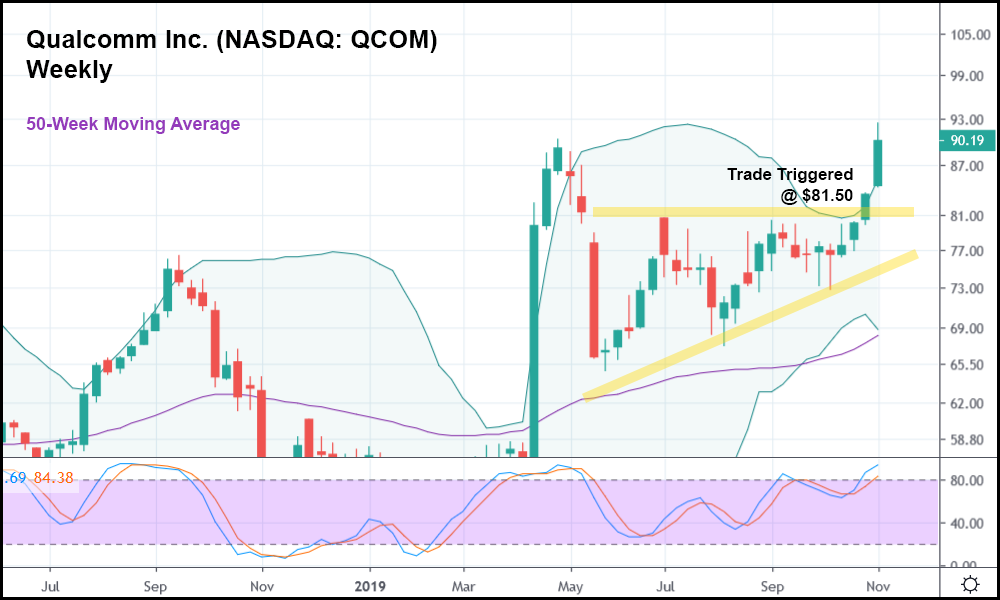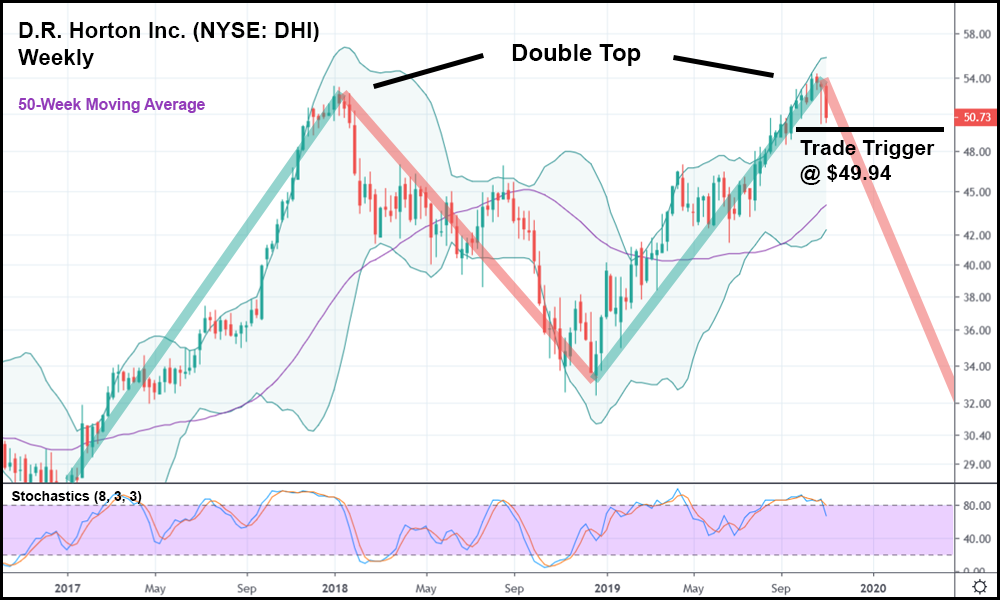We’ve talked a lot about triangle formations recently. More importantly, we’ve generated a ton of winning trades by using them to set “breakout” trade triggers.
Our last triangle-based trade to “fire” was on Qualcomm Inc. (NASDAQ: QCOM), which has risen 10% since our entry point.

Pretty great, right? If only triangles formed on every stock we wanted to trade.
But I’m not bringing QCOM up just to gloat, even if it is a “brag-worthy” trade that most folks missed. Instead, I wanted to feature QCOM as a reminder of how powerful support, resistance, and trendlines can be. Breakouts past those price points can yield fantastic results, and over the last two weeks, QCOM proved as much.
However, triangle breakouts are also typically short-lived. They can run long from time to time, but in general, after a stock “pops” post-breakout, it’s only a matter of candlesticks before the rally (or dip) runs out of steam.
There’s another formation, though, that tends to run a little longer – the “M” (or “W”), characterized by a double top (or double bottom) with a failed correction (or rally) in between.

In the weekly candlestick chart above, you can see that D.R. Horton Inc. (NYSE: DHI) is about to complete the last leg of that “M” formation. The trick with these is to hop in on the final leg once the stock’s price action gives us sufficient evidence of a downwards move.
In DHI’s case, we have just that. The current weekly candlestick is trading below the last six candle bodies, and contact with the upper Bollinger Band (BB) was made a few weeks ago, suggesting that a rebound correction is likely. The stochastics, despite this week’s selling, remain high, indicating that DHI might still be overbought.
But most importantly, if DHI keeps dropping from here, it will have formed a double top, setting up for a major long-term downtrend. The first leg of the “M” got started at around $27.50, meaning that if DHI could potentially fall that far. If it does, it’ll drop by over 40% from our entry point.
An appropriately priced and dated put option would grab even better returns. Far better, well into the triple digits.
That’s not to say that DHI will absolutely decline by 40% if it starts working its way downwards. If there’s anything we’ve learned over the last few weeks as investors, it’s that anything (and I mean anything) can happen.
But in this case, DHI has given us a strong “frame” to work with, which, in the highly volatile marketplace we find ourselves in, is a welcome change from the norm.








